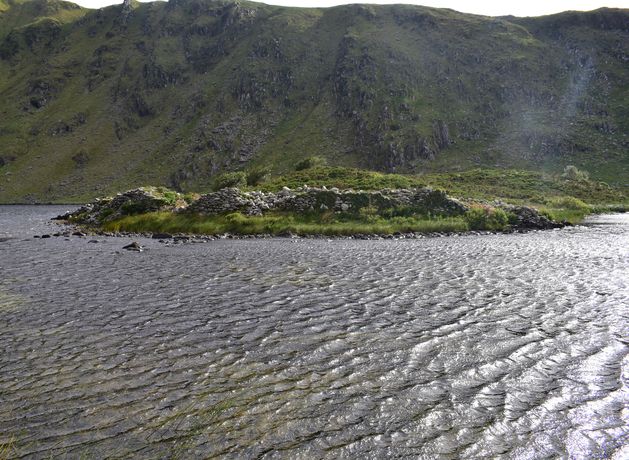World
Appeal to place newly discovered prehistoric remains at Kerry marine park on map to stop damage from tourism

Archaeologist Michael Gibbons uncovers ancient causeway and clocháns in ‘one of richest archaeological zone is Europe’
A previously hidden causeway to a crannóg and a megalithic tomb overlooking Ventry are among the remains identified in the last six months by archaeologist Michael Gibbons.
The locations are within the new Páirc Náisiúnta na Mara or marine park announced by the Government in April, which includes Kerry’s Conor Pass and Mount Brandon.
“This area is one of the richest archaeological zones in all of Europe and it is extremely important that the new sites are mapped,” Mr Gibbons said.
Recent finds include a number of clocháns and early field systems stretching over a kilometre of hillside above the Owenmore river, and overlaid by an abandoned 19th-century settlement.
He also found further clocháns and a very well preserved booley settlement on the north-east of Brandon ridge, close to the Dingle Way.
“On the western slopes of the mountain, yet further clocháns and a possible ring cairn (prehistoric burial) have also been identified,” Mr Gibbons added.
“South of the main Brandon ridge and overlooking the village of Ventry I have identified a new megalithic tomb.”
He believes it to be the remains of a large wedge tomb, similar to one on nearby An Chathair Aird townland which is known as Leaba an Fhir Mhuimhnigh (The Bed of the Man of Munster).
It is one of richest archaeological zones in Europe and many of its monuments are exceptionally well preserved
“In the mountains east of Mount Brandon between the Conor Pass and Annascaul lake, fieldwork has identified a dozen new monuments or monument clusters,” he added.
Low water levels on Loch a Dúin, a glacial lake deep in the mountains, have revealed the remains of a stone causeway leading from the shore to the stone crannóg in the middle of the lake: “We knew about the crannóg here but not about the causeway and stone causeways like this are rare in Ireland.
“Causeways are very common on the Scottish lochs in the Outer Hebrides where they can date to back to before 3000 BC, and so this would suggest this crannóg is older than previously thought,” Mr Gibbons said.
“It is one of richest archaeological zones in Europe and many of its monuments are exceptionally well preserved.
“Settlement here can be traced back to the later Mesolithic era around 4500 BC when a hunter gatherer group had established a semi-permanent camp on the coast at the extreme edge of the peninsula.”
Today’s News in 90 Seconds – June 30th
A pioneering archaeological survey undertaken of the Dingle peninsula in the early 1980s was directed by archaeologist Judy Cuppage.
Mr Gibbons believes the new finds demand a “comprehensive re-survey” by the State before work begins and he added: “It is important the resources of the new marine park, including Mount Brandon, are properly managed and any new development within it avoids unintended damage.”
The monastic enclosure on the summit of Mount Brandon is already showing signs of wear and tear from the increase in visitors.
“Without a proper management plan in place, the creation of a new natural park within part of the Brandon range has the potential to do more harm than good,” Mr Gibbons said.
“Recent damage to historic monuments within the Nephin Beg and Connemara national parks can be directly traced to the failure to have a proper management structure in place before development began.”










